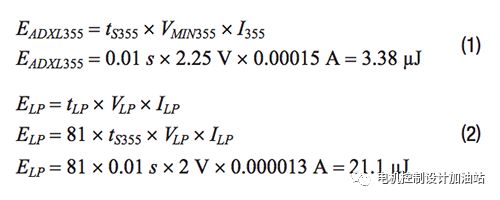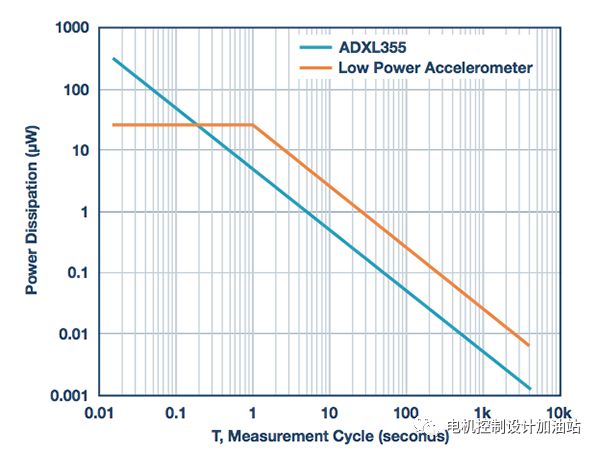Compare a low-noise accelerometer such as the ADXL355 with a popular low-power accelerometer
Introduction A survey of MEMS accelerometers found that currently one product cannot provide the lowest noise and lowest power consumption at the same time. When comparing a low-noise accelerometer such as the ADXL355 with a popular low-power accelerometer, the ADXL355 performs as follows: * Noise density is 20 μg/Hz1/2, 9 times lower. * Power consumption is 338 μW, about 13 times higher. When the sensor is not in use, if the application powers the sensor cycle to save power, the relationship between noise and power consumption will be very different. This difference comes from the establishment time, which may surprise some people. In applications where it is necessary to average a set of sensor data in a continuous array to achieve a critical uncertainty condition, the time required to fill the array directly affects the total setup time. For example, the Allan's variance curve in the ADXL355 data sheet shows that a 0.01 second average time will reduce its uncertainty to less than 100 μg. To achieve a similar level of uncertainty in a low-power sensor, the required average time will be 81 times longer than the ADXL355, because the noise reduction amplitude of the average filter is proportional to the square root of the mean time. Equations 1 and 2 quantify the tradeoffs described above using the energy required for each data/recorder combination to support a single data record to reach this level of accuracy. The estimation results are quite interesting. A much shorter mean time (tLP = 81 × tADXL355) results in the ADXL355's energy requirement (EADXL355) being six times lower than the low power device's energy requirement (ELP). Equation 3 reflects power consumption, which is the above energy level divided by the interval time (T) for each measurement. Observing the corresponding graph of this relationship (Figure 1) yields several meaningful results. First, low-power devices support continuous operation when the measurement cycle time (T) is less than 0.81 seconds. Second, the ADXL355 solution consumes less power when the measurement cycle time is greater than approximately 0.13 seconds. In the end, we need to be open-minded. Sometimes we can use the lowest noise (highest performance) device to achieve the lowest power solution. Figure 1. Relationship between power consumption and measurement cycle time The handheld addresser is used to program the address of the monitoring module offline. When in use, connect the two output wires of the handheld encoder to the communication bus terminal (terminal label 1, 2) of the monitoring module, turn on the black power switch on the right side upwards, and press "ten Add", [Subtract ten", [Add one place" and [Subtract one place" to program the address. Motion Sensor Photocell Light Control,Sensor For Motion Control,Exterior Motion Sensor Control,Hollow Shaft Encoder Changchun Guangxing Sensing Technology Co.LTD , https://www.gx-encoder.com

